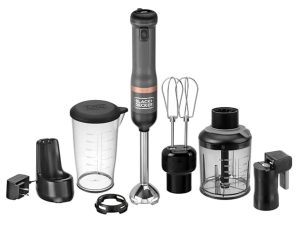
In an era of increased environmental awareness, Low-Waste Living has emerged as a sustainable lifestyle choice that focuses on minimizing waste generation and reducing ecological footprint. From innovative product designs to conscious consumer practices, trends in low-waste living are reshaping how individuals and communities approach sustainability. This article explores the latest trends in low-waste living and highlights key strategies for adopting a more eco-friendly lifestyle.
1. Minimalism Decluttering:
A fundamental trend in low-waste living is embracing minimalism and decluttering to reduce possessions and streamline life. By paring down belongings to essentials and focusing on quality over quantity, individuals can avoid unnecessary waste and consumption. Minimalism promotes mindful consumption, intentional living, and a clutter-free environment that is conducive to sustainable practices and conscious living.
2. Zero-Waste Grocery Shopping:
Zero-waste grocery shopping is a growing trend in low-waste living that emphasizes plastic-free packaging, bulk shopping, and reusable containers. By opting for package-free produce, using cloth bags and containers for bulk items, and supporting local farmers’ markets and zero-waste stores, individuals can reduce single-use plastic waste and promote sustainable food consumption practices. Zero-waste grocery shopping encourages mindful eating habits and reduces environmental impact.
3. Sustainable Fashion Choices:
Incorporating sustainable fashion choices into a low-waste lifestyle involves selecting ethical, eco-friendly clothing brands, thrifting, upcycling, and embracing a minimalist wardrobe. By opting for timeless, high-quality pieces, supporting sustainable fashion initiatives, and giving new life to pre-loved garments, individuals can reduce textile waste and lessen the environmental impact of the fashion industry. Sustainable fashion choices promote ethical consumption, conscious fashion practices, and a circular economy approach to clothing.
4. Composting and Food Waste Reduction:
Composting and food waste reduction are essential practices in low-waste living that help divert organic waste from landfills and promote nutrient recycling. By composting kitchen scraps, food waste, and organic materials, individuals can create nutrient-rich soil for gardening and reduce greenhouse gas emissions associated with food decomposition. Implementing composting systems, reducing food waste, and supporting local food recovery initiatives are key strategies for minimizing environmental impact and embracing a low-waste lifestyle.

5. Reusable and Sustainable Alternatives:
The trend of using reusable and sustainable alternatives for single-use items is gaining popularity in low-waste living. Replacing disposable products with durable, eco-friendly alternatives such as stainless steel straws, bamboo utensils, beeswax wraps, and reusable shopping bags reduces waste generation and promotes resource conservation. Embracing reusable and sustainable alternatives in everyday practices fosters a culture of waste reduction, environmental stewardship, and conscious consumerism.
6. DIY and Upcycling Projects:
Engaging in do-it-yourself (DIY) and upcycling projects is a creative trend in low-waste living that encourages repurposing, repairing, and renewing items to extend their lifecycle. Upcycling old furniture, clothing, and household items, as well as crafting homemade cleaning products, personal care items, and decorations, helps minimize waste, reduce consumption, and foster resourcefulness. DIY and upcycling projects promote creativity, self-sufficiency, and environmental consciousness in everyday living.
7. Sustainable Home Design and Practices:
Sustainable home design and practices play a key role in low-waste living, with trends focusing on energy efficiency, water conservation, eco-friendly materials, and waste reduction. Adopting sustainable home practices such as energy-saving appliances, water-efficient fixtures, natural lighting, and passive design strategies helps minimize environmental impact and create a healthier living environment. Sustainable home design trends emphasize eco-conscious choices, resource efficiency, and sustainable living principles.
8. Digital Minimalism and Tech Sustainability:
Digital minimalism and tech sustainability are emerging trends in low-waste living that encourage mindful technology use, e-waste reduction, and digital detox practices. By decluttering digital spaces, reducing screen time, and prolonging the lifespan of electronic devices through repair and responsible disposal, individuals can decrease electronic waste and promote sustainability in the digital realm. Digital minimalism and tech sustainability promote a healthy relationship with technology, mindful consumption, and electronic waste reduction.
9. Community Engagement and Advocacy:
Community engagement and advocacy play a crucial role in promoting low-waste living practices and driving sustainable change at a collective level. Participating in community clean-up events, supporting local sustainability initiatives, advocating for eco-friendly policies, and sharing knowledge and resources with neighbors and peers fosters a culture of environmental stewardship and collective action. Community engagement and advocacy are instrumental in advancing sustainable practices, raising awareness, and building a network of like-minded individuals committed to low-waste living.

10. Education and Empowerment:
Education and empowerment are essential trends in low-waste living that focus on raising awareness, providing resources, and empowering individuals to make informed choices for a sustainable future. By educating oneself about environmental issues, adopting eco-friendly practices, and sharing knowledge with others, individuals can create a ripple effect of positive change and inspire others to embrace a low-waste lifestyle. Education and empowerment are key drivers for fostering a culture of sustainability, conscious consumption, and environmental responsibility.
Conclusion:
The trends in low-waste living reflect a shifting mindset towards sustainability, waste reduction, and conscious consumer practices. By adopting minimalism, embracing zero-waste initiatives, making sustainable choices, and engaging in community-driven actions, individuals can reduce their environmental impact, promote resource conservation, and lead a more eco-conscious lifestyle. Incorporating these trends into everyday practices paves the way for a greener, more sustainable future where low-waste living is a norm rather than an exception.























